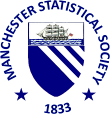Measuring British real wage rates and GDP per head in the very long run
As we contemplate a future where living standards for the younger generation may be lower than those enjoyed by their parents and, especially, their grandparents, it is worth looking back at the past and the fortunes of earlier generations. For how long has it been possible for each new cohort to assume that it will be better off than the one before and when and for how long did the reverse happen? The answers lie in historical reconstructions of the cost of living, purchasing power of wages and annual earnings, number of mouths to be fed and hands kept in work, availability of employment, and growth or otherwise of national income, all of which have long been central concerns to economic historians.
It was J. E. Thorold Rogers (1823-90) who established the enduring English historiographic tradition of systematically gathering and publishing quantifiable information on prices, wages, population, output and much else, extending from the dawn of record keeping in the twelfth century to the present. By 1956 sufficient progress had been made for the economist Henry Phelps Brown (1906-94), in collaboration with statistician Sheila Hopkins, to publish their seminal article ‘Seven centuries of the prices of consumables, compared with builders’ wage-rates’, containing perhaps the single most iconic graph in English history. The chronology they charted of the rising and falling purchasing power of the daily real wages paid to adult male building labourers entered the historical subconscious and, notwithstanding the cautions spelt out by Phelps Brown and Hopkins, came to be regarded as a proxy for much else.
That academic complacency has now ended. Over the last 15 years interest in wage rates and related matters has rekindled to the point when it has become one of the most hotly debated topics in economic history, packing to overflowing a lecture room at the recent World Economic History Congress at MIT. Whereas it has long been known that male and female workers were paid at different rates, thanks to work by Jane Humphries and Jacob Weisdorf, it is now clear that this gender gap was far from consistent over time. It has become equally evident that, contrary to the assumptions of some scholars, the number of days per year that workers needed to or were able to work also fluctuated, with the result that trends in daily real wage rates and annual real earnings followed significantly different trajectories. This revelation helps explain why, puzzlingly, estimates of GDP per head (the most commonly accepted and widely used measure of economic growth) for Britain, the Netherlands, Spain and Italy fail to track trends in daily real wage rates. Instead, at least in the case of Britain, since the end of the thirteenth century the fit between annual earnings and GDP per head has been reassuringly close.
These are new and controversial results, likely to be tested and contested for some time to come, but as Bruce Campbell’s lecture will show, they shed fresh and revealing light upon the advances and reversals in employment opportunities and earnings experienced by British workers over the last seven centuries. Slowly but cumulatively these have transformed workers’ living standards from their dismal level at the beginning of the fourteenth century to the much improved and steadily rising levels that have prevailed since the industrial revolution and which, until now, have been taken for granted.
BRUCE CAMPBELL is a graduate of the Universities of Liverpool and Cambridge and Emeritus Professor of Medieval Economic History at The Queen’s University of Belfast. His research career has been devoted to harnessing the wealth of detailed statistical information contained in England’s extensive medieval archives to shed systematic light on the country’s economic development when it was still comparatively poor, under-developed and prone to subsistence crises and famine. He has been equally concerned to place that experience in long-term historical perspective. Topics on which he has published include the provisioning of late-medieval London, medieval land use, agricultural output and productivity, the social distribution of income in 1290, and British national income over six centuries. His 2016 book, The Great Transition: climate, disease and society in the thirteenth and fourteenth centuries (CUP: awarded the 2017 Gyorgy Ranki Prize by the Economic History Association), explores the conjuncture of human, climatic and biological developments which, in the fourteenth century, ended one world system of exchange and determined the greatly altered direction taken, from the sixteenth century, by the next. He is a Member of the Royal Irish Academy and Academia Europaea and Fellow of the Royal Historical Society, Academy of Social Sciences and British Academy.
